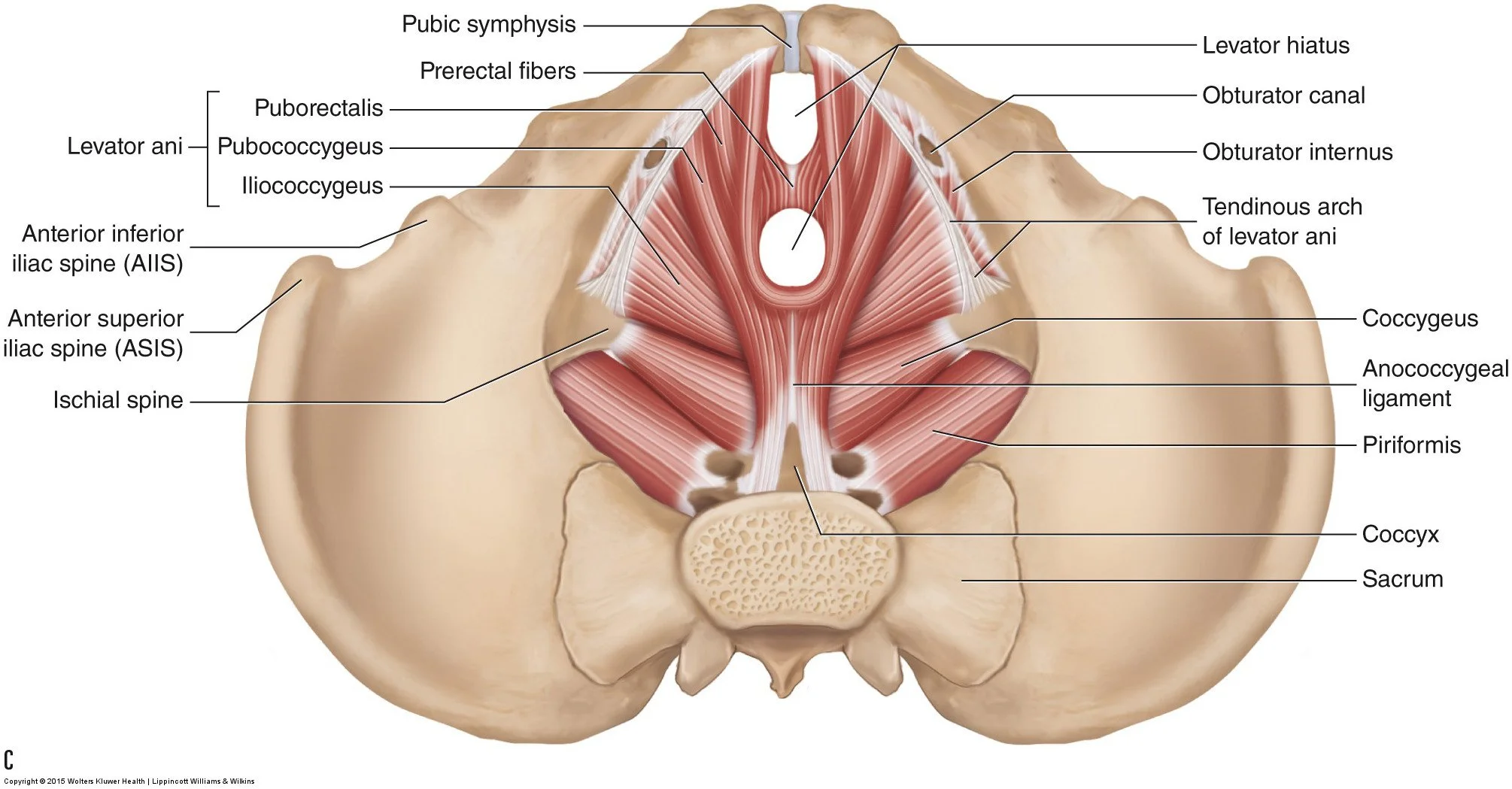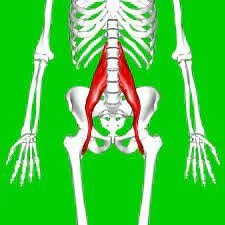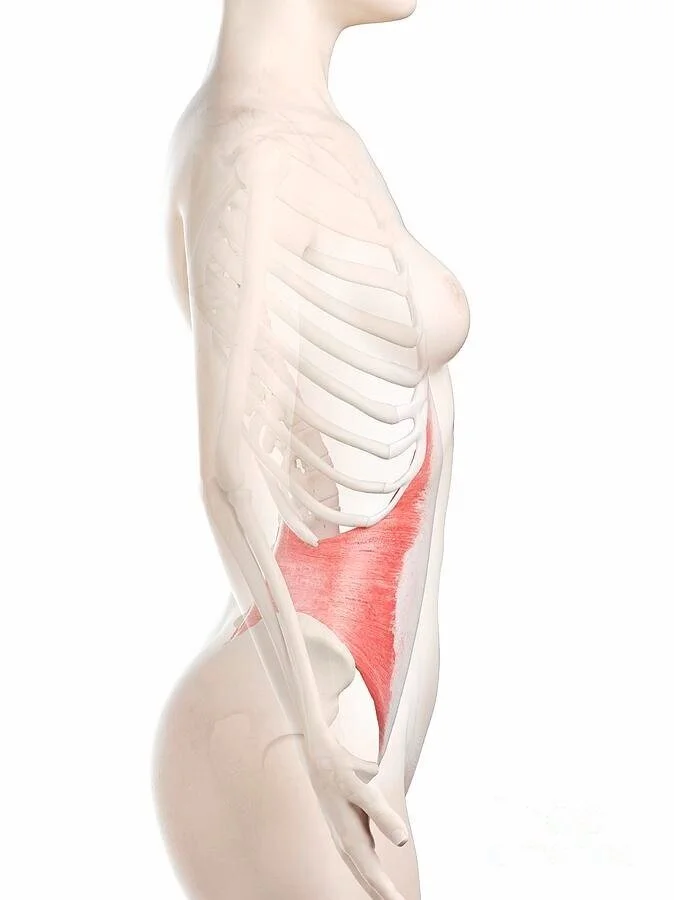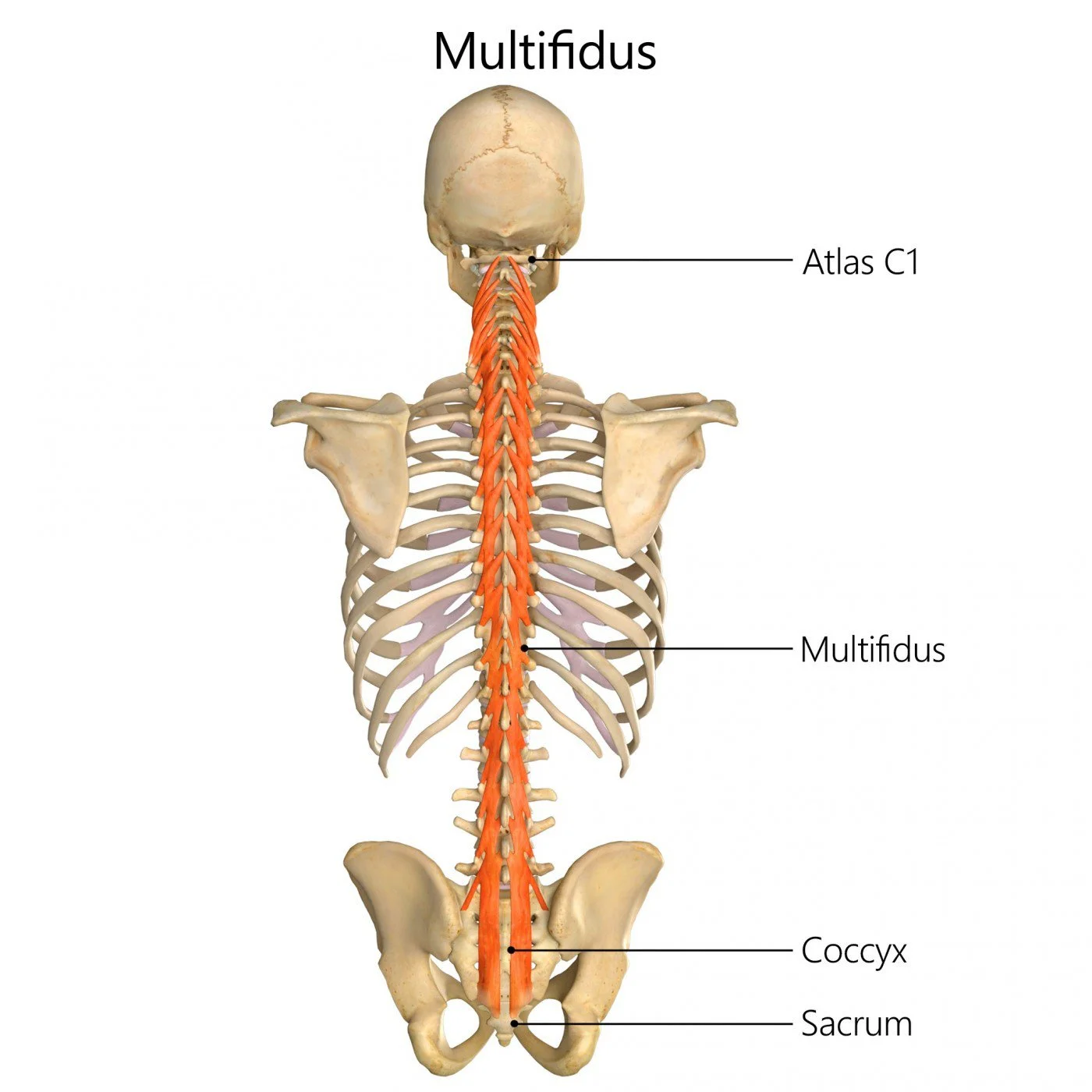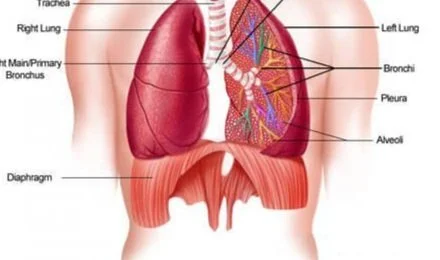Importance of Core and Stability Training After Having Children
Even with exercising during pregnancy, after having children it is important to work on your core and pelvic muscles to get them back to full function. Why?
My number one reason for recommending that we rehabilitate our core muscles after carrying a child or children is because those muscles are partly responsible for keeping us moving, posture, and keeping our organs functioning properly. The intrinsic core is made up of the pelvic floor, multifidus, transverse abdominis, and diaphragm. All of which get moved and pushed on during pregnancy and child birth.
Let’s start at the base.
Pelvic floor- Superior view
The pelvic floor.
Consisting of levator ani (puborectalis, pubococcygeus, and iliococcygeus), coccygeus, anococcygeal ligament, and the piriformis (to name a portion). The levator ani play a major role in bowel movements, sexual function, and supporting the structure of our pelvis. The coccygeus is responsible in helping control urination and bowel movements when under pressure, which is constant during pregnancy. During pregnancy and birth, these help hold our babies and the length tension relationships are compromised. This can lead to leaking bladders (like from laughing, coughing, or sneezing). The anococcygeal ligament is responsible for letting your body know the orientation of your pelvis and hips (neuromuscular- brain to body connection) and when it gets stretched during pregnancy and birth, can result in a tilted pelvis. Pelvic tilting is often the cause of low back and sciatic pain. The piriformis is one of the muscles responsible for external rotation of the hips. Being lengthened or overactive (tight) can cause pinching, hip pain, and even lead to knee and back pain. There are ways to train these muscles through various techniques of stretching, SMR (self myofascial release), and exercises.
Moving up a bit:
The psoas and transverse abdominis.
Psoas muscles - front view
Transverse abdominis - side view
The psoas are responsible for hip flexion, they connect the front and back, and upper and lower parts of the body: with connection points in the lumbar spine, near your pelvis, in your groin, and to the top of your leg (femur). These often end up tight after baring children. Often times one will be tight and the other will be lengthened. This can be due to or set off a chain reaction of your hips being misaligned. Once again causing hip, back, and even knee pain. It is important to both strengthen and lengthen these muscles for a strong, stable, mobile foundation. The transverse abdominis is the deepest portion of the core muscles. It connects in the ribs, pelvis, and around from front to back. It is the body’s natural support belt. Think of twisting side to side and holding you upright. They’re amazing muscles, and they get stretched from holding us and our littles when they’re in the womb so they need some love afterwards. The transverse abdominis is the main stabilizer for the lumbar spine (low back) and supports our organs and helps support our pelvis. When they are weakened (from being stretched), your pelvis can rotate and the abdomen can bulge outward. Think about how we stand while pregnant? Our low backs (lumbar spine) bows inward and our bellies out.
That leads on to…
The multifidus muscles
Multifidus - Posterior view
These are part of the deep muscles of the back and they hold up our spine. They are connected to each vertebrae all the way up until the very top of the cervical spine (top of the neck). They are thick, small triangular muscles. There are three categories of them, but for now I will talk about the 2 more relevant: the thoracic and lumbar multifidus. Along with holding our spine up, the thoracic multifidus assist in extension, cross body rotation, and flexion of our spine. We’re constantly bending, rotating, and picking things up and if these are tight or weak, it can cause back pain. You know when you’re carrying your little one and your mid back starts hurting? These are the muscles that probably need some love. They extend up to 5 vertebrae from their starting point and kind of look like weaving of a basket. The lumbar multifidus connect the spine to the sacrum, helping stabilize the hips and spine. If these are stretched out or tight, it can contribute to pelvic tilt.
Last but not least:
The diaphragm
Diaphragm - Front view
This muscle is a dome shaped muscle right below the lungs and helps us breath. It gets squished upwards during pregnancy. Breathing helps stabilize posture naturally. When the diaphragm is not able to fully contract and release, the scalenes, serratus anterior, pectorals, and traps become overactive and can also cause back and neck pain. This induces the body’s natural stress response as well. When the psoas are underactive, that can also cause an overactive diaphragm. When we breathe in, the diaphragm contracts and flattens as the chest opens up. As we breathe out, it relaxes back to its dome shape. That heavy breathing feeling towards the end of pregnancy? Our diaphragm is squished and our chest muscles take over, causing breathing to feel labored and restricted.
As you can see, it’s all linked together in one big chain and when one link is off, the whole thing jengas (as I like to call it) into a system that causes pain throughout the body when it’s supposed to be our biggest support system.
Want to get the length-tension relationships back to optimal? Send me a message on the contact page or any of the social media links below.

